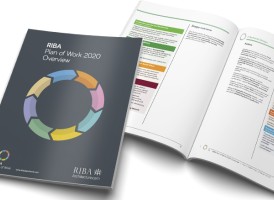
What the RIBA Plan of Work 2020 means for manufacturers
26 August 2020
The RIBA Plan of Work, first developed in 1963, has become the standard for organizing constructi...
01 February 2020 | By Dr Stephen Hamil
NBS Source, the new platform for construction professionals was announced in February 2020. Dr Stephen Hamil, Innovation Director at NBS walks us through the product and how it is aligned with specification product NBS Chorus, how it utilises existing standards and is prepared for standards that are currently in development.

NBS has been connecting construction professionals and product manufacturers since being founded in 1973. There are now over 3,500 practices using NBS specification solutions and well in excess of 1000 manufacturers in our product platform.
At NBS, our specification platform NBS Chorus allows construction professionals to produce robust specifications documenting the requirements for the products and systems that form parts of their building projects.
In February 2020, we announced the arrival of our new manufacturer platform, NBS Source. This new platform allows our manufacturer customers to position their construction products and systems to the construction professionals that specify on projects.
Using NBS Source, construction professionals can find, select and then specify the right product for their project.
Over the years we have been on a journey of continuous improvement. We have looked to both (a) strengthen the quality of technical content we provide aligning this to industry standards, and (b) to be on the cutting edge of technology to offer the best user experience possible.
The NBS Chorus specification platform and our NBS Source manufacturer platform are aligned so that a manufacturer’s product specification is defined using the same standardized terminology as the equivalent NBS generic specification. By having this alignment, it is possible to quickly filter or compare to find the right product for a project. Equally, this means that when a product is selected, it can be easily specified.
The figures below illustrate this:
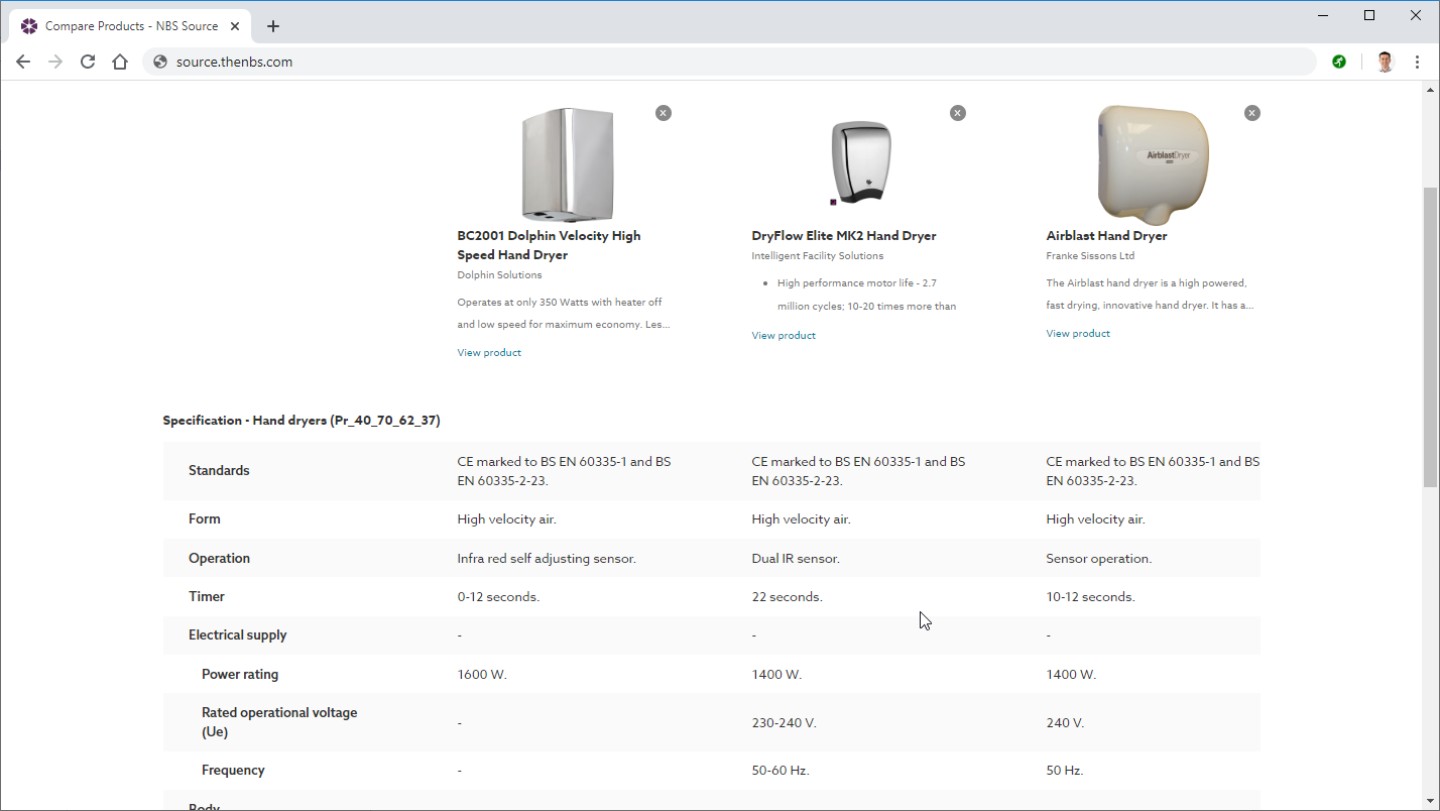
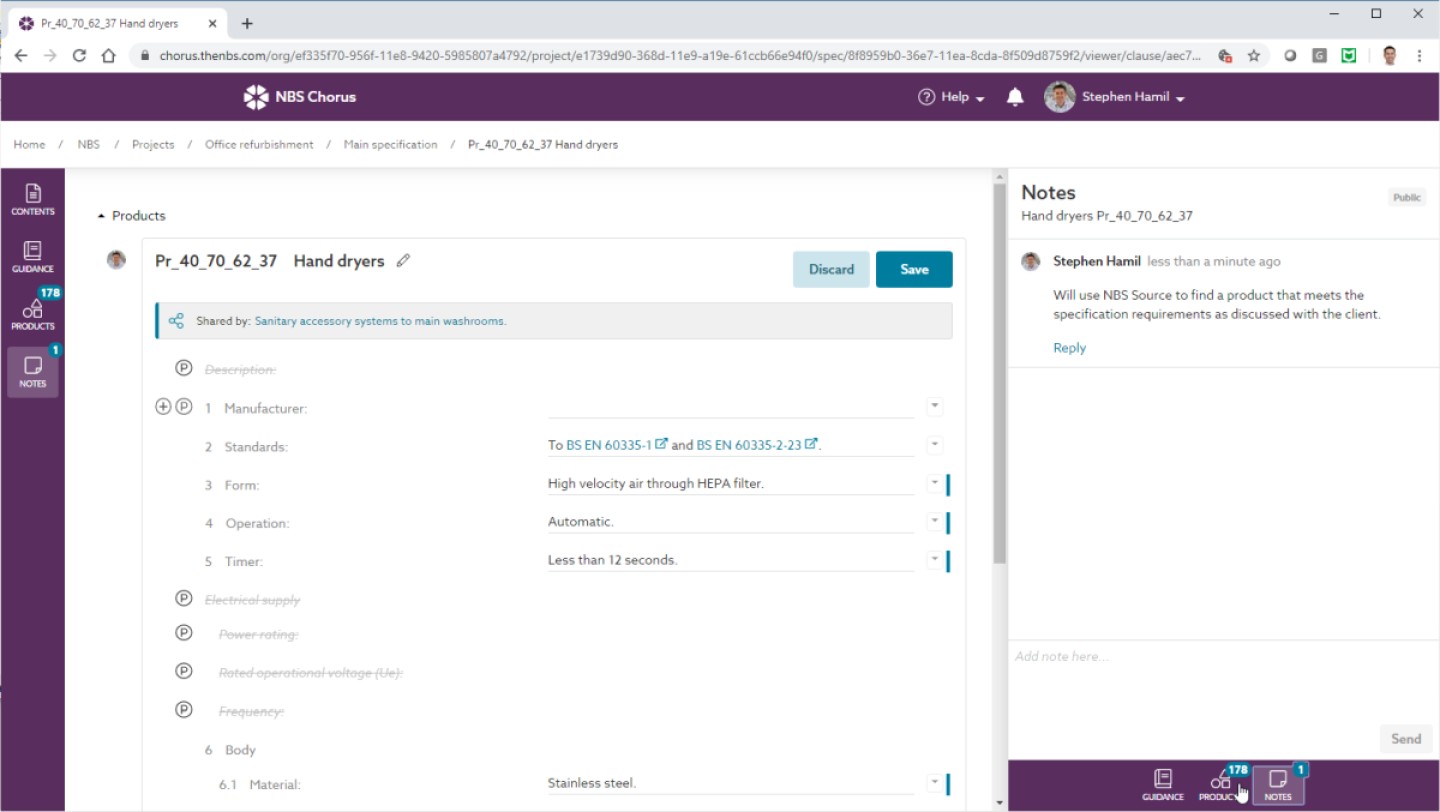
The construction industry rightly demands standardization. Information should be presented in a standard structure and differences between software platforms should be around functionality and usability and not information structures.
When developing NBS Source we implemented this platform so that it utilizes existing standards and is prepared for standards that are currently in development.
Some examples of this are provided below.
BS ISO 12006-2:2015 – Building construction. Organization of information about construction works. Part 2: Framework for classification
https://shop.bsigroup.com/ProductDetail/?pid=000000000030280908
Members of the NBS technical team have represented the UK internationally in the development of this standard. Furthermore, working with industry, NBS is the publisher of the UK implementation of ISO 12006-2, which is Uniclass 2015. All products in NBS Source have a primary mapping to the relevant System (Ss) or Product (Pr) table within this classification system. Products also have an additional mapping to Table J of Uniclass 1997 (Common Arrangement of Work Sections) to help those who still manage their information to this classification system. In the examples in section 1 of this document, the Hand dryer products would be classified primarily to Pr_40_70_62_37 - Hand dryers, but also have additional mappings to N13/472 Hand dryers.
Uniclass 2015 is published under a Creative Commons international licence and may be accessed from the website https://www.thenbs.com/uniclass. BS EN ISO 19650-2 defines Uniclass 2015 as the classification system to use for information exchange when working on BIM projects.
ISO 16739-1:2018 - Industry Foundation Classes (IFC) for data sharing in the construction and facility management industries — Part 1: Data schema
https://www.iso.org/standard/70303.html
Probably the most established data standard for the construction industry is IFC. Typically it is used for the importing and exporting of geometry and associated attributes from one 3D modelling tool to another. However, IFC also has a data schema to give 3D objects further meaning. Where there is a definition in the IFC data schema for the product in NBS Source then the IfcElementType and PredefinedType is defined. An example of this would be a timber flooring products would have an IfcElementType of IFCCoveringType and PredefinedType of FLOORING.
For those manufacturers with digital objects authored to the NBS BIM Object Standard, the associated PSets for these items in the IFC data schema are included in their objects.
BS EN ISO 23386 – Building information modelling and other digital processes used in construction — Methodology to describe, author and maintain properties in interconnected data dictionaries
https://shop.bsigroup.com/ProductDetail?pid=000000000030376816
This standard sets out how there can be multiple platforms (referred to as ‘dictionaries’) for defining libraries of product information structures. It also describes how these platforms can interoperate when exchanging data.
Fundamental to this standard is the concept of a property not simply being defined as a line of text, but it being a rich set of attributes.
For example, a property such as the Security Grading of an Intruder detection and alarm system is defined by a number of attributes. These attributes would include: a globally unique identifier; the date the property was first created in the library; the date of the last revision of the property; the name, potentially in many languages; the standard that defines it (for example BS EN 50131-1); and, the units and the data type (string, integer, float etc.).
Furthermore, to follow this standard and to ensure quality, there must be governance in place to author and maintain the content in the platform. For NBS Source, this governance is provided by the full time NBS technical team working with our construction manufacturer partners.
BS EN ISO 23387 Building Information Modelling (BIM) - Data templates for construction objects used in the life cycle of any built asset — Concepts and principles.
https://shop.bsigroup.com/ProductDetail?pid=000000000030376819
This standard looks at grouping properties together to digitally represent physical objects. These objects could be products or systems, but could equally be larger more complex objects such as spaces or buildings.
Rules are provided on how to group properties against local or international standards, and also on how to map to classifications and IFC as detailed previously.
Again, as with BS EN ISO 23386, NBS is observing and contributing to standards in development through engagement with the B/555 committees, and ensuring that the NBS Source is built on the principles that define these standards.
Standards are essential, but at NBS we remove the complexity behind these standards to provide a user experience presented in plain construction language with great functionality.
Examples of this are shown below. Figure 3.1 shows that a manufacturer does not need to know whether the classification for their Aluminium handrail is Pr_25_30_36_03 or Pr_25_30_36_96. They simply type ‘handrail’ and then pick the most appropriate product type. Once selected, the product is then classified correctly by the NBS Source system.
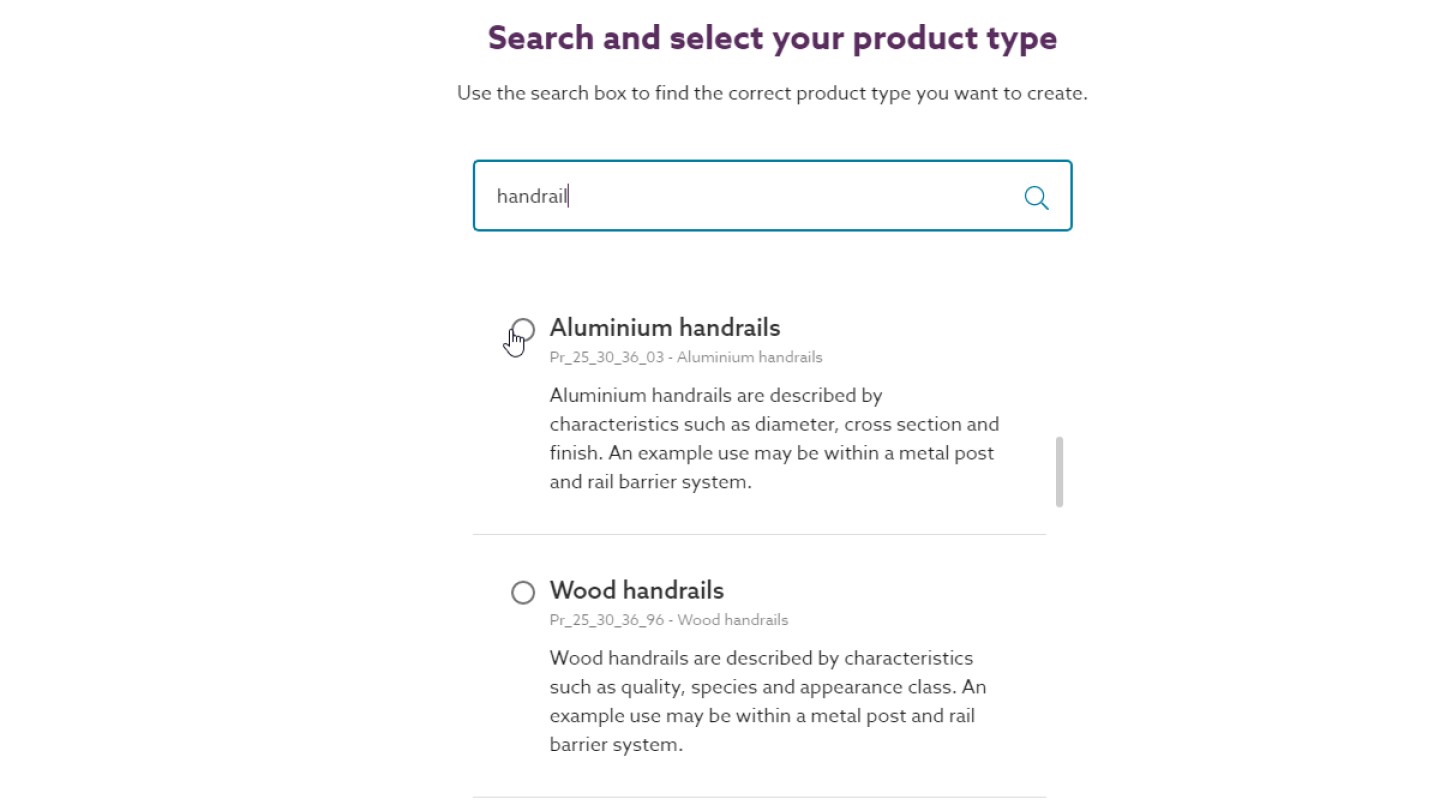
Figure 3.2 shows that once the product is classified, if there are relevant IFC property sets then they are automatically added by the NBS Source platform. In the example below, a Gas-fired boiler product has been added and the platform has automatically included the corresponding IFC entities and property sets.
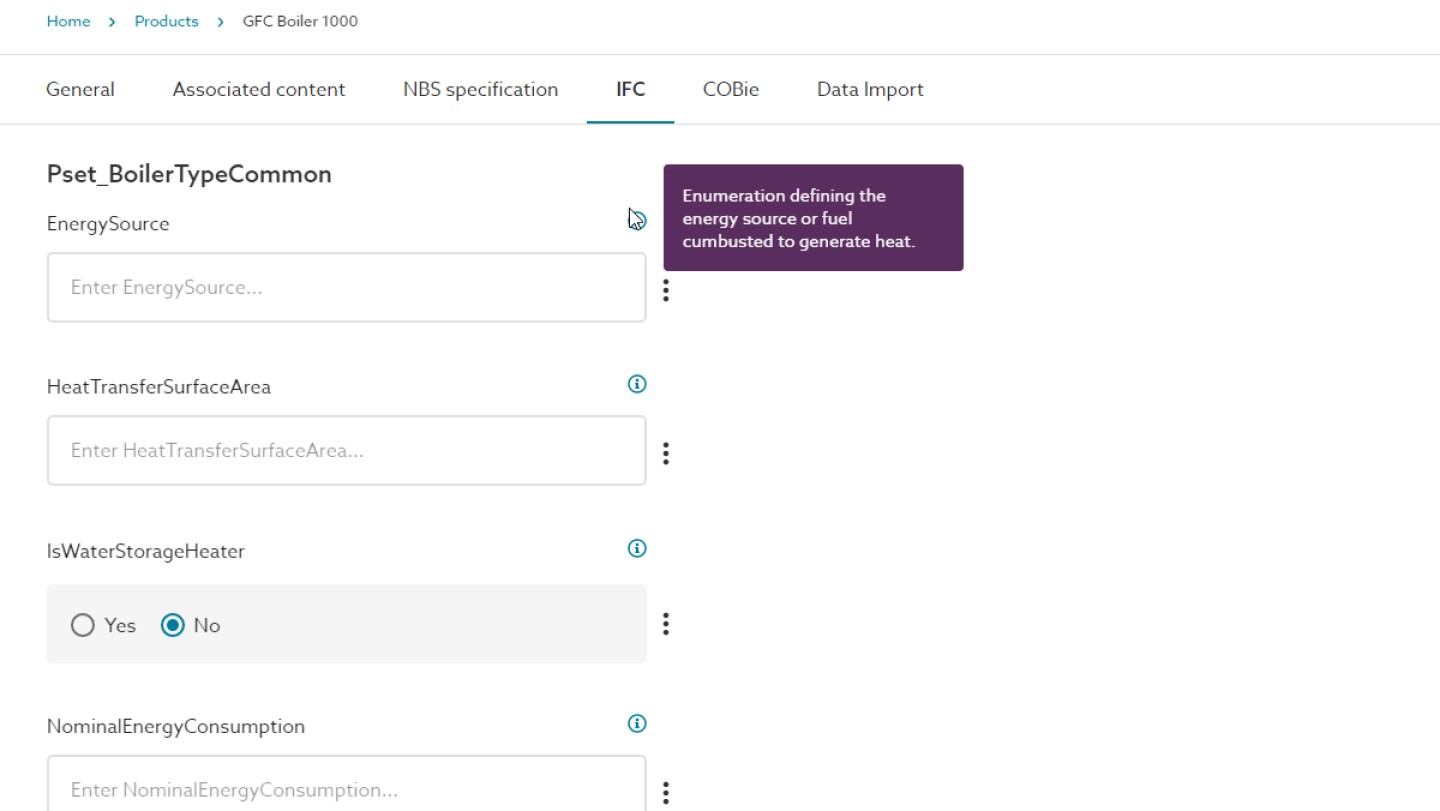
Figures 3.3 and Figure 3.4 show the benefits of aligning NBS Source and NBS Chorus. In these examples, the specification properties for a clay brick as defined in BS EN 771-1 are displayed. In the specific example, the categories in BS EN 771-1 limit the mean deviation for a given dimension on a sample of ten units on the declared work size. The enumerated values listed in this standard are displayed for the manufacturer to pick from. By creating standardized information from different manufacturers for all of their products, and by ensuring this information is aligned to the specification, NBS Source will become an essential source of product information for those working in the construction industry.
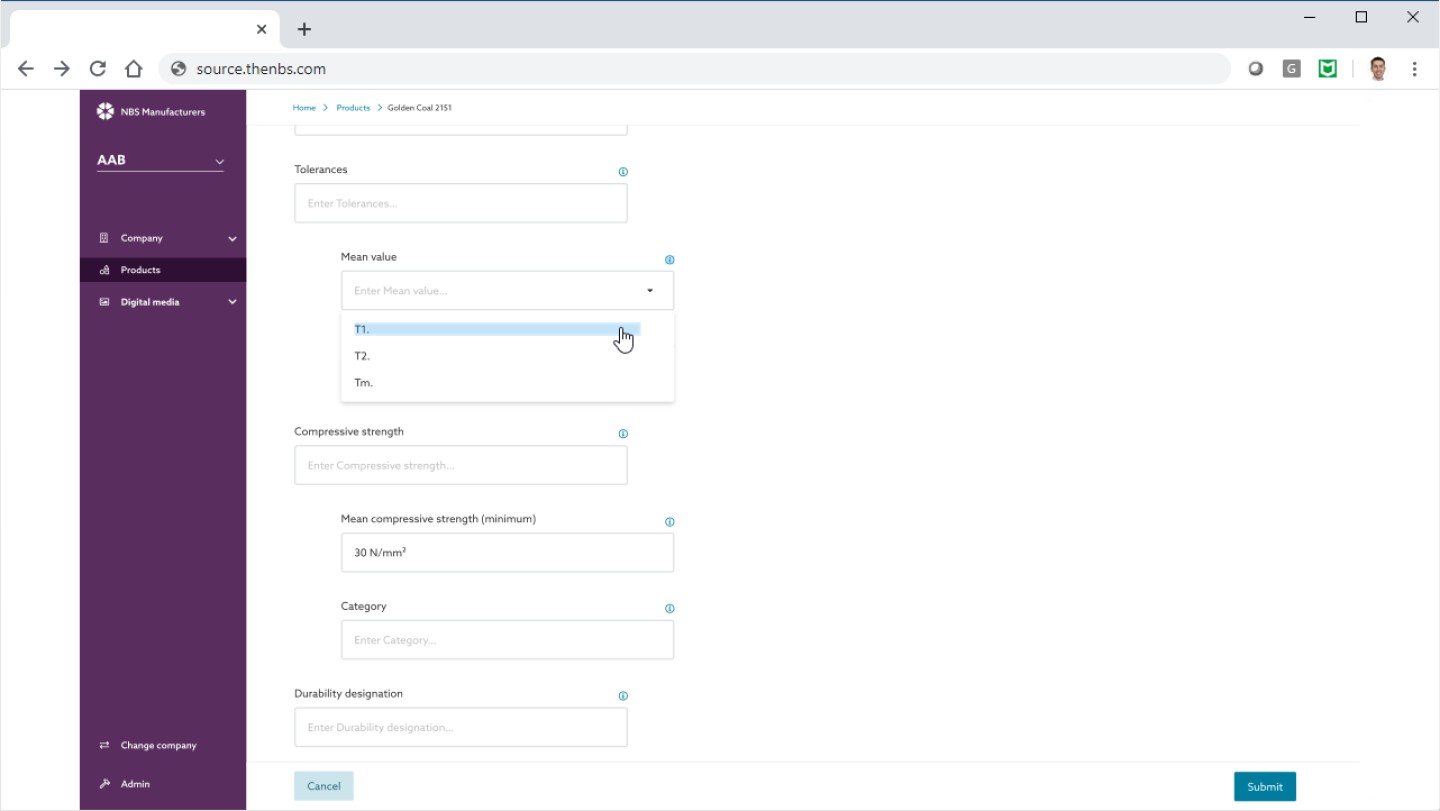

Below we see how the NBS technical team manage changes to industry standards. Figure 3.5 shows a screenshot from Construction Information Service (CIS) showing the publication history of BS EN 771-1 from 2003 to 2011, and through to the current up-to-date standard published in 2015. The NBS team manages the content in CIS as part of a joint venture with IHS Markit.
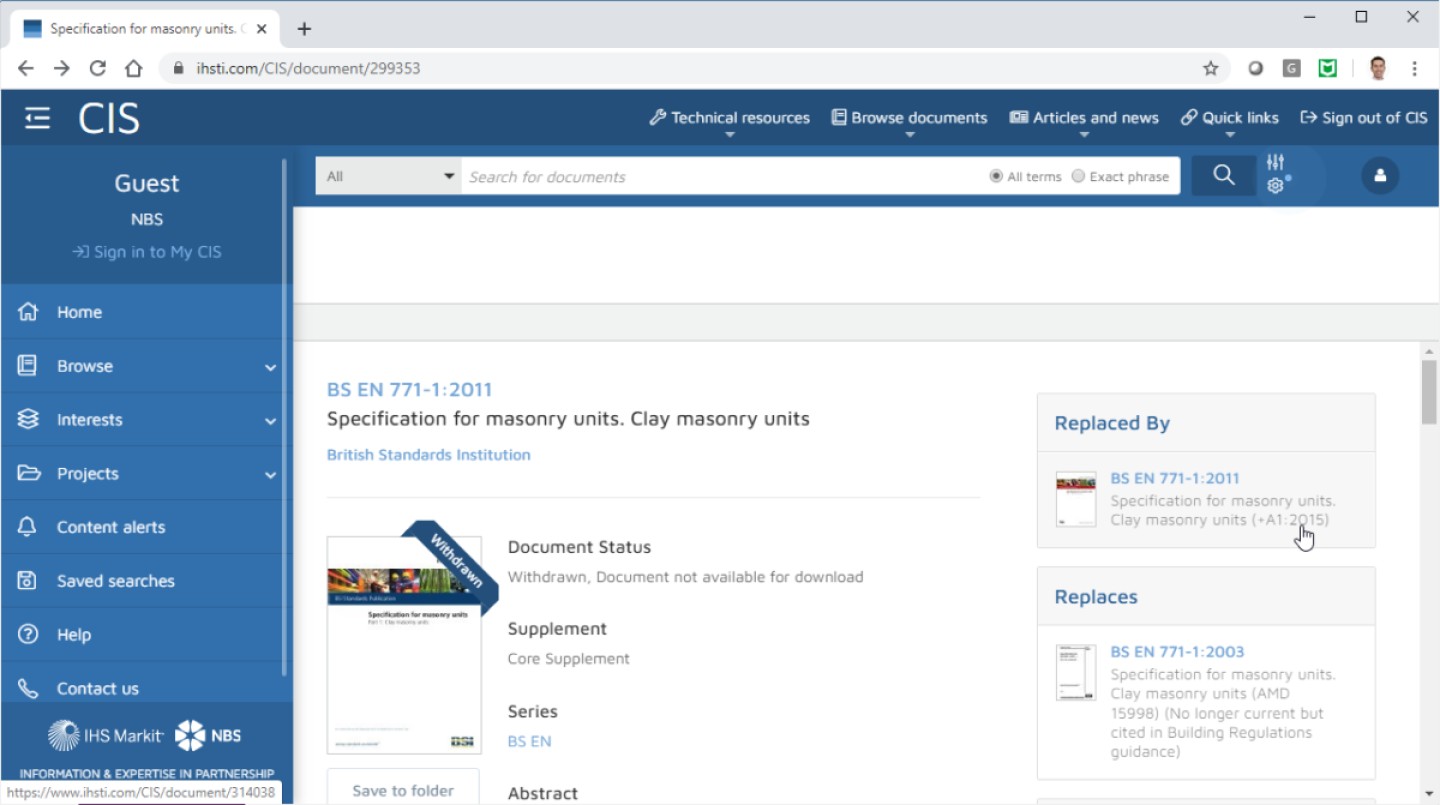
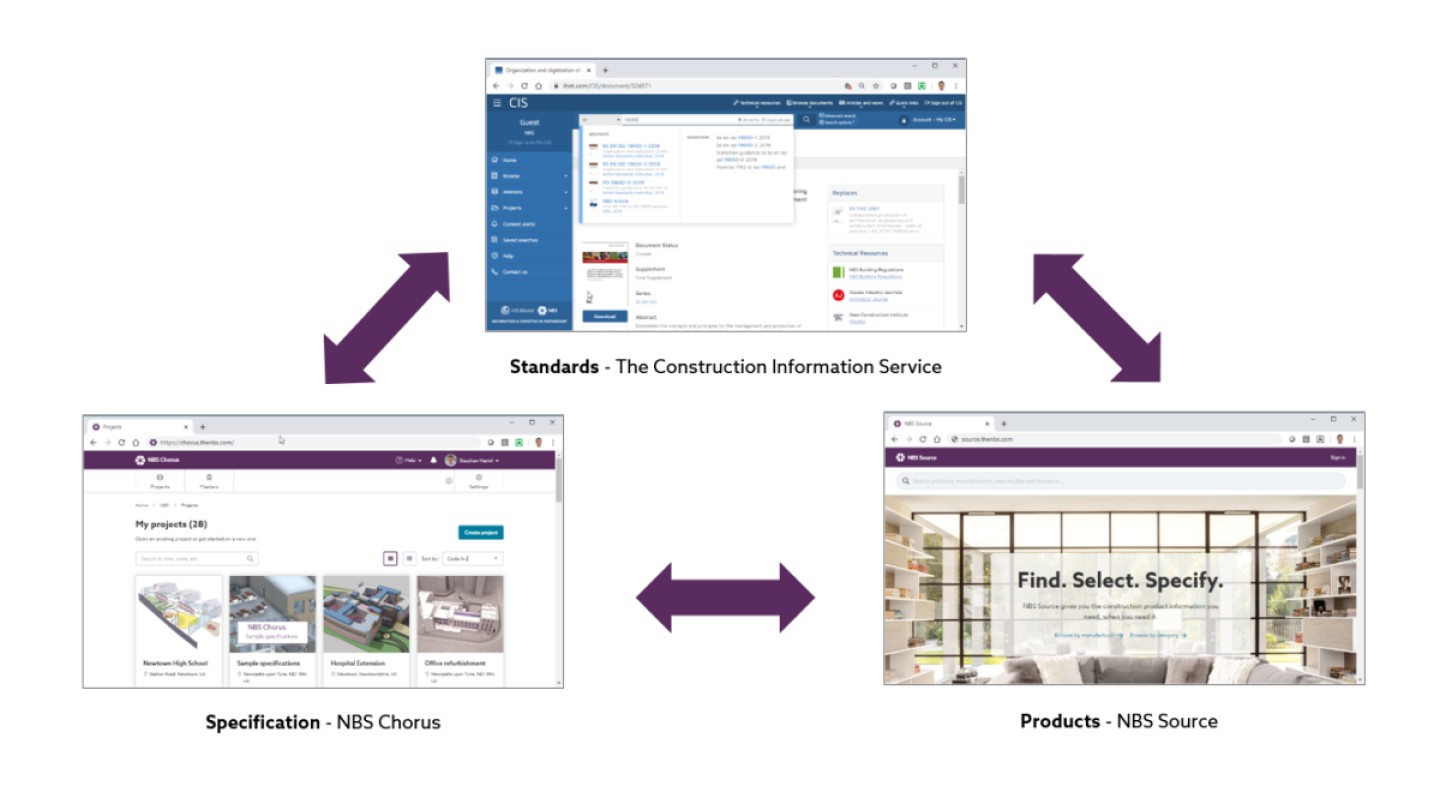
Within the construction industry, there will be other product information platforms that contain well-structured manufacturer product information. Where these platforms also align to the standards and the developing standards then it will be possible to transfer this information digitally.
For example, a manufacturer that produces clay bricks may invest in digital systems to internally manage their data. These digital systems may be known as Product Information Management systems (PIMs), Product Lifecycle Management systems (PLMs) or Master Data Management systems (MDMs). Equally, they may choose to feed this information from their internal system using APIs into commercial platforms, offered by organizations such as NBS, which position their data in front of their customers. By following a standardized approach to data, this will be digital interoperability will be possible without manual data entry.
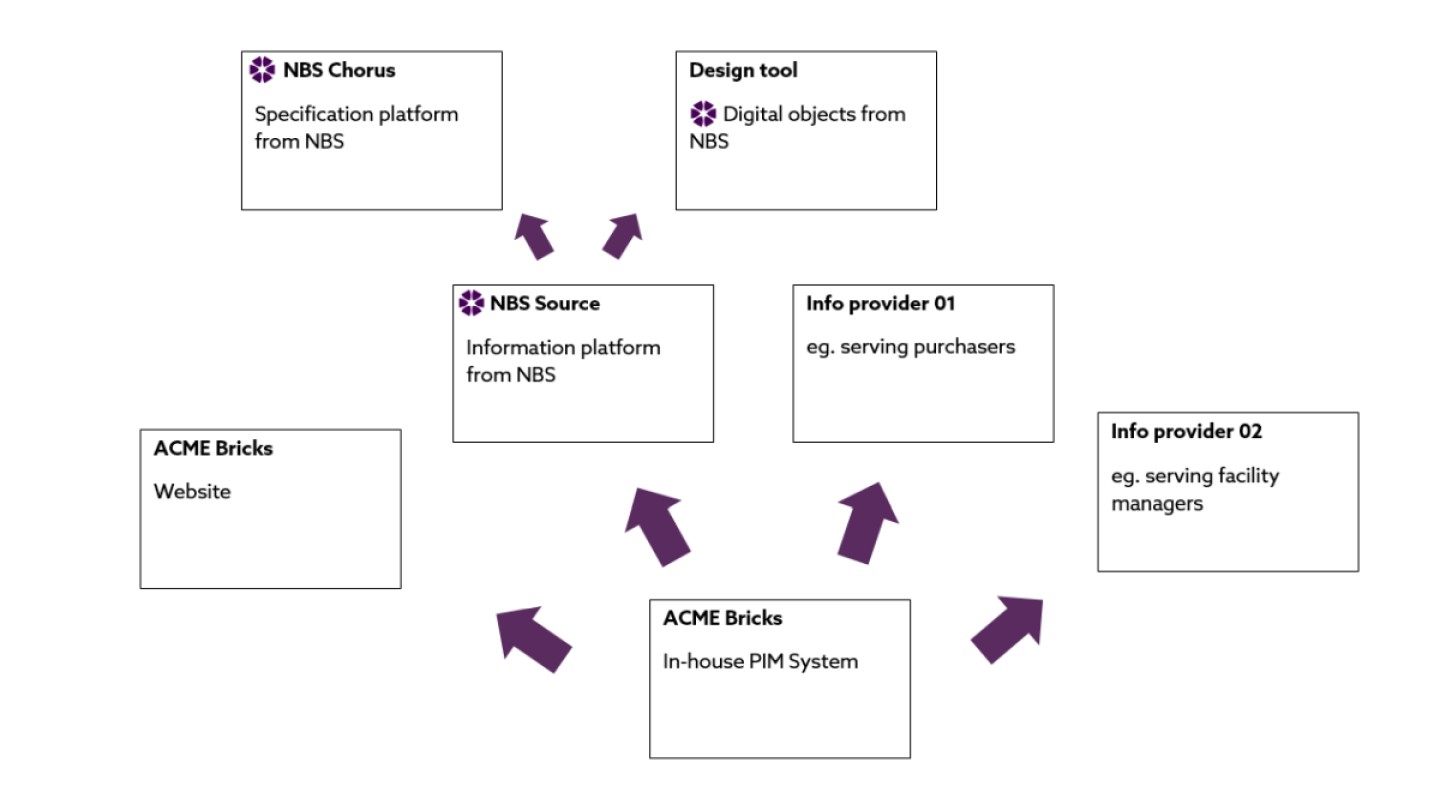
• NBS Source - https://manufacturers.thenbs.com
• NBS Chorus - https://www.thenbs.com/nbs-chorus
• Uniclass 2015 - https://www.thenbs.com/uniclass